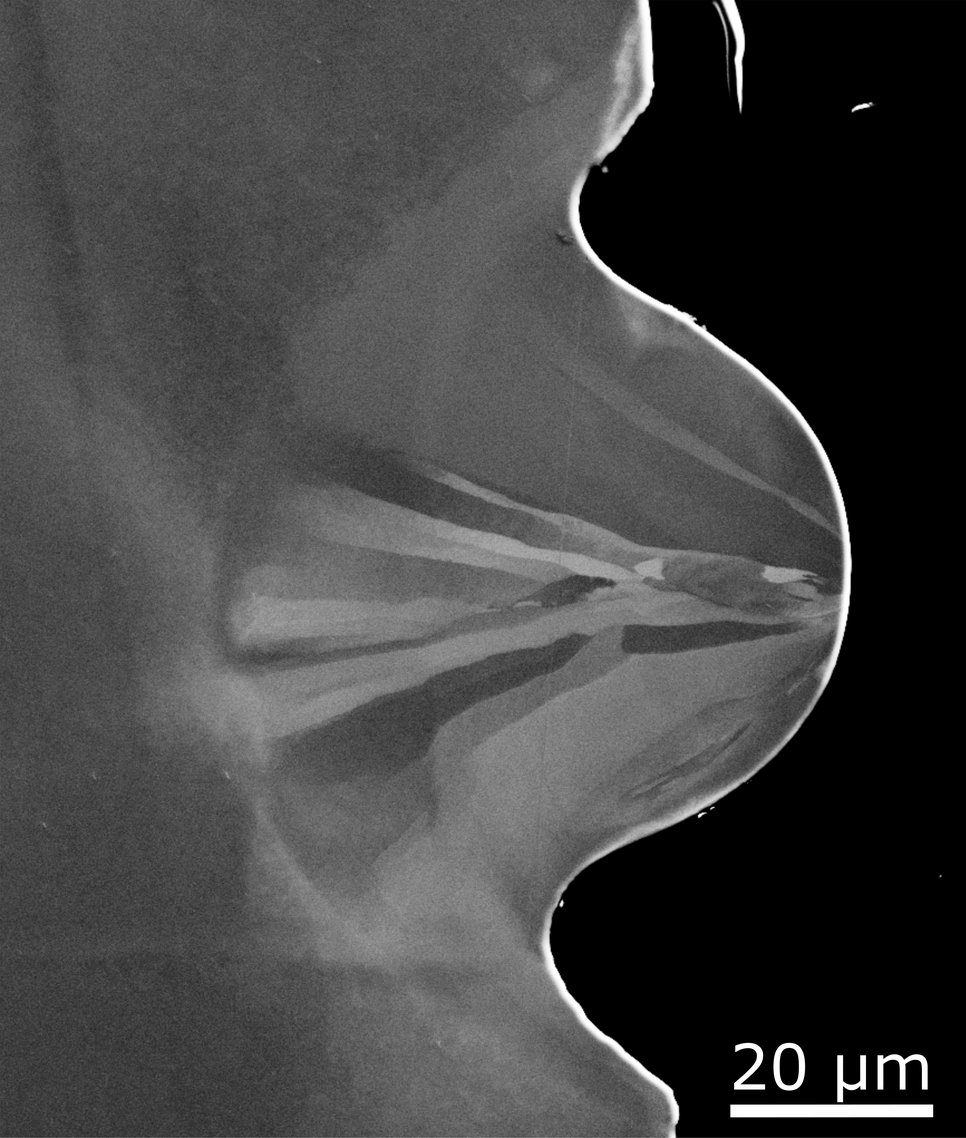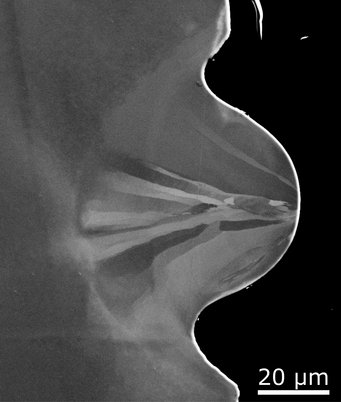Non-toxic, Affordable Bulk Thermoelectrics for Clean Power Generation from Waste Heat
Thermoelectrics can generate electricity from a heat source through the Seebeck effect: a temperature difference leads to a difference in voltage. The efficiency of the conversion can be increased by introducing microstructural defects that efficiently scatter phonons, i.e. the carriers of lattice vibrations and hence heat, but do not affect much the movement of electrons thus maintaining good electrical conductivity. Together with national and international partners, members from the group Nanoanalytics and Interfaces (NG) and the MA department have discovered that the specific structure and composition of planar defects in an as-quenched AgSbTe2 mosaic crystal make them effective to scatter sites for phonons leading to a considerable reduction of the lattice thermal conductivity. A combination of electron channeling contrast imaging (ECCI) in a scanning electron microscope [1], atom probe tomography and high-resolution imaging transmission electron microscopy was used to understand these mechanisms.

Fig. 1: Arc melted Fe2VAl alloy after laser surface remelting (power 200 W, speed 1400 mm/s, focus size 90 µm).
This preliminary joint work led us to establish a new joint activity with 6 early-career scientists working closely together across departments, under the leadership of Dr. Siyuan Zhang and Dr. Ting Luo, to develop new thermoelectric materials. We have identified a set of intermetallic compounds, Heusler and Half-Heusler alloys, which we are currently synthesizing using our combinatorial high-throughput metallurgical laboratory. We use our knowledge of metallurgical processing to control the introduction of defects in the microstructure and use advanced microscopy and microanalysis to investigate the materials from the millimeter to the atomic scale. A first example is shown in the figure below, where we have used the in-house selective laser melting, typically used for 3D printing, to modify the local grain structure in a Fe2AlV Heusler alloy. We are currently using our microscopy and microanalysis toolbox to determine which of the introduced defects most effectively reduce the thermal conductivity, helping us guide the design of future materials and devices.
References
[1] L. Abdellaoui, S. Zhang, S. Zaefferer, R. Bueno Villoro, A. Baranovski, O. Cojocaru-Mirédin, Y. Yu, Y. Amouyal, D. Raabe, G.J. Snyder: Acta Mater 178 (2019)
Authors: B. Gault (MA), C. Scheu (NG)
